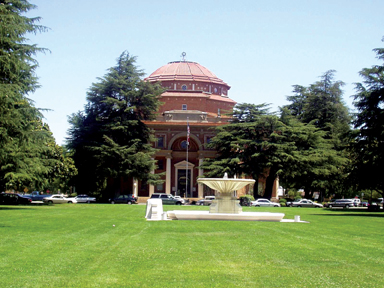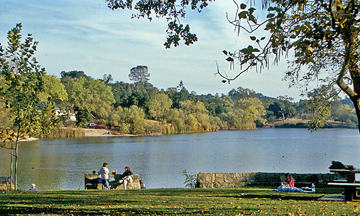 Most people who are new to the area can’t pronounce it at first and no one is sure what it means. But that hasn’t bothered Atascadero, pronounced ah-task-a-dare-oh, a Spanish name that is roughly translated as “a place of much water” or “a muddy place.”
Most people who are new to the area can’t pronounce it at first and no one is sure what it means. But that hasn’t bothered Atascadero, pronounced ah-task-a-dare-oh, a Spanish name that is roughly translated as “a place of much water” or “a muddy place.”
The reason for the name stems from the early days when travelers on what is now Highway 41 discovered that the surrounding countryside turned into a bog during the rainy season.
This is part of what you will learn from docents of the Atascadero Historical Society with a visit to the Colony House at 6600 Lewis Avenue. It is open on Wednesday and Saturday from 1:00 – 4:00 P.M.
Atascadero has a most interesting past. Originally home to the Native American tribe called the Salinas; the area came under the jurisdiction of Franciscan Friars when Missions San Miguel Archangel and San Luis Obispo de Tolosa were built. Ownership of what became Rancho Atascadero changed hands a few times until eventually a man named J. H. Henry owned the vast acreage.
In 1913 visionary Edward Gardner Lewis set out to develop a planned utopian colony at Atascadero. Lewis, a successful magazine publisher from the east, who had developed such a community in Missouri, purchased the acreage from Henry together with investors from across the country. The acquisition was celebrated on July 4, 1913.

Lewis employed city planners, engineers and experts in agriculture to make his dream colony a reality. He anticipated 30,000 residents. The early settlers had to suffice with living in a tent city while land was surveyed and subdivided. Orchards were planted, a water system installed and the first 18 miles of Highway 41 constructed.
The crowning jewel of Lewis’ planned town was an Italian Renaissance-style building that has been home to Atascadero City Hall and the Historical Museum. This unique building has become one of California’s Historical Landmarks, Number 958. It was severely damaged in the 2003 earthquake and is now being restored. In the meantime, much of the Historical Museum artifacts are housed at the Colony House.
Today Atascadero approaches the population number Lewis envisioned and many of his ideas for the colony are included in the city’s general plan. Preservation of open space, large lot sizes, protection of trees and hillsides and the keeping of domestic animals make this a special rural community.
Over the years the downtown area lost its charm but the formation of the Atascadero Main Street Organization has worked to change that. Downtown is now referred to as the Colony District and the organization is comprised of business owners, property owners and community volunteers dedicated to transforming downtown into the historical, cultural, social and economic center of Atascadero.
The Carlton Hotel in downtown was refurbished and although it was not part of Lewis’ Colony it became one of the most significant structures in the downtown area. The Carlton, originally named The Annex, was a luxury hotel attracting visitors traveling between Los Angeles and San Francisco. After a humble beginning it changed hands and in 1931 new owner, Nola Tunks, renamed the establishment, the Carlton, a name associated with distinctive hotels in the east. Personalities such as Bette Davis, Fred Mc Murray, Jack Benny, Dick Powell, and Ralph Bellamy regularly stayed here while visiting the Central Coast. The hotel now is the height of luxury with 52 guest rooms with all the comforts of a fine residence.
There is much to see in Atascadero and visitors can enjoy the Atascadero Lake Park Complex, including the Charles Paddock Zoo, and the Veterans Memorial Tribute. Many events are held year round such as Hot El Camino Nite and Mid-State Cruizers where hundreds of classic cars cruise down El Camino Real. Colony Days is held in October with a parade to commemorate the beginnings of the town. In June the Atascadero Lakeside Wine Festival occurs with more than 80 area wineries participating. Christmas time brings 50 tons of manufactured snow to play in and Santa is in residence in the Christmas Castle.
— Ruth Ann Angus











